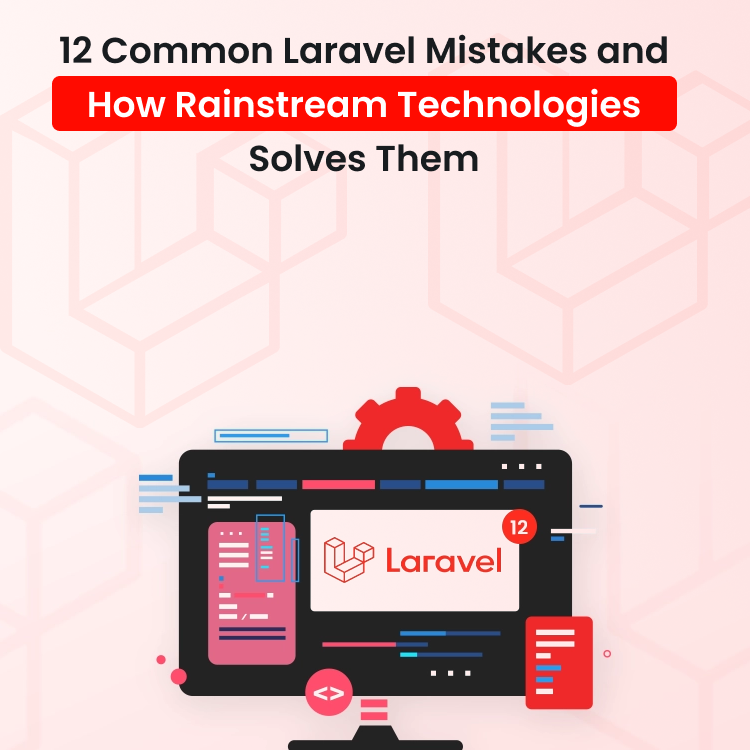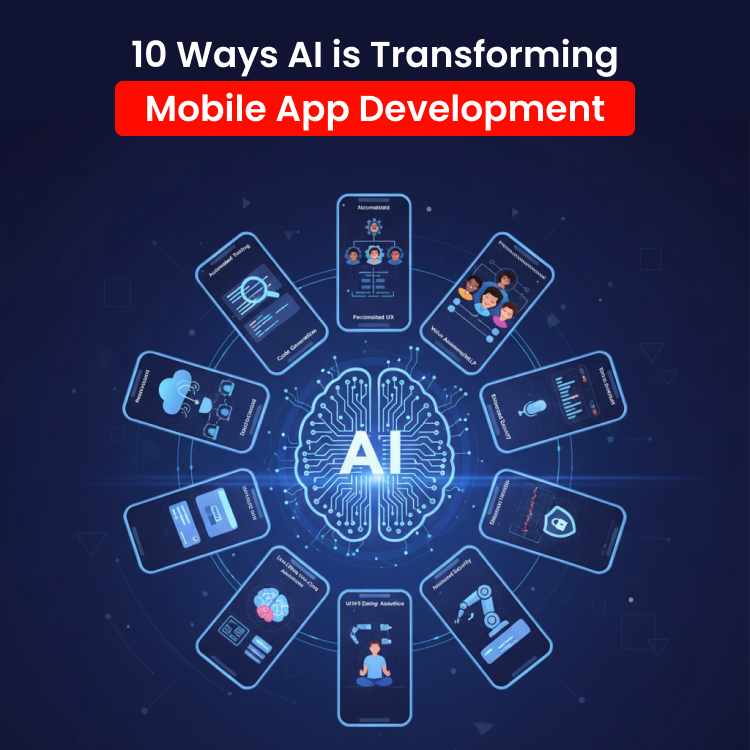

Introduction
In a digital-first world, your cloud applications will act as a direct reflection of the success of your business. Monitoring the correct performance indicators is essential to guarantee that your applications are performing better according to the expectations of users, growing, and providing an excellent return to the investor.
At Rainstream Technologies, being the leading cloud application development company, we recognize the value of data-driven management of applications.
The cloud migration provides the opportunities of unmatched scalability, flexibility, and economic feasibility. But costs can get out of control, and performance can be behind schedule without diligent monitoring and analysis.
By adhering to the right metrics, you will easily understand where, how, and why costs are incurred so as to get maximum returns on your investment. Organizations are able to establish the efficiency, affordability, security and overall performance of their cloud services using key performance indicators (KPIs).
This data-driven solution will help to solve the issues proactively, use resources successfully and have a positive experience for the user in all cases.
1. Application Uptime & Availability (SLA Compliance)
Uptime and availability are the basic metrics that assess the consistency of your application. Uptime is the percentage of time your application is running, whereas availability looks at the accessibility and correct operation of the service as seen by the user.
Service Level Agreements (SLAs) are often the governing factor of these metrics and are contracts with your clients that specify the expected level of service. User satisfaction and trust are dependent on consistently high uptime and availability. Even a percentage decline in uptime can be converted to considerable downtimes in a year.
For instance, 99.9% uptime implies more than 8 hours of downtime per year. By paying close attention to these measures, you will be assured that you are meeting your SLA commitments and are providing a service that is capable of being relied upon by your users.
Through our cloud applications development services at Rainstream Technologies, we help businesses build and maintain highly available cloud applications to ensure seamless user experiences.
2. Response Time & Latency
Response time and latency are vital metrics of app performance, and they have a direct effect on user experience. Response time refers to how long your application takes to respond when a user makes a request.
Latency, which is an element of response time, is the delay in the transfer of data across a network. Slow response time and a high degree of latency will cause users to be frustrated and write off your application.
Indicatively, studies have concluded that a fair percentage of online customers will leave their carts due to an unreasonably long loading time of the site. Therefore, the minimization of response time and latency becomes important in order to guarantee user satisfaction and engagement.
Monitoring these measures will enable the identification of possible performance bottlenecks, e.g., bugs in servers and ineffective code, and improve them efficiently.
3. Scalability & Auto-Scaling Efficiency
One of the major advantages of the cloud is that it has the potential to scale the resources according to demand. Scalability is used to check how a cloud environment adapts to changes in the workload.
Auto-scaling refers to the process where the resources are automatically allocating resources according to performance requirements. When demand increases, more resources are added, and when it decreases, resources are removed to cut down costs.
Efficient auto-scaling means that you do not pay for unused capacity when there is low traffic, and it also does not lead to performance deterioration when traffic is at its peak.
Scaling events and how they affect performance and cost can be monitored, which allows you to adjust your auto-scaling policies to be tuned to maximum efficiency. An effective cloud application development company uses this proactive mode of resource management of resources.
4. Error Rate & Failure Recovery Time (MTTR)
The error rate metric represents the proportion of errors that occur within your application. A high error rate may be an indication of underlying errors, like bugs in the code or server configuration. The error rates can be tracked to promptly diagnose and identify systemic issues, which results in better application stability.
Mean Time to Recovery (MTTR) is an essential parameter when failures are experienced. MTTR refers to the average recovery time after an incident. A low MTTR level indicates how effective your incident response and recovery are. In businesses where high availability and reliability are important, minimizing MTTR becomes a key objective.
Read also: Custom Cloud Application Development: 7 Common Pitfalls and How to Avoid Them
5. Resource Utilization (CPU, Memory, Bandwidth)
Keeping track of resource utilization is important in performance and cost optimization for cloud application development companies. The primary resources to track include:
- CPU Utilization: This is used to determine the percentage of central processing unit capacity that is in use. A consistently high CPU utilization may create a bottleneck on performance, where very low utilization implies over-provisioning and wastage of resources.
- Memory Utilization: This metric is a scale that monitors system memory usage by your application. Your application may be slowed down due to high memory consumption and may even crash.
- Bandwidth: This is defined as the pace of data transfer. To track the data flow and recognize possible network-related performance problems, it is an important task to monitor the bandwidth usage.
Proper monitoring of these resources will be useful in ensuring that your application will have the required capacity to perform at its best without having to incur unnecessary costs.
Being a leading cloud development company, we focus on the efficient management of resources in all our projects. Learn more about our approach at Rainstream.
6. Cost Efficiency / Cloud Spend Optimization
Although the cloud has a high level of cost savings, it is simple to see that the expenses get out of control without adequate management.
Cloud cost optimization is defined as the way of reducing the cloud spending without impairing or deteriorating the performance and dependability. The main indicators to be monitored in the area are the cost of unused resources and the percentage of cloud spending to revenue.
Measures of cloud cost optimization include right-sizing instances to real usage, closing down idle capacity, and commitment-based pricing in situations where it is believed to be a stable workload.
By gaining complete insights into your cloud expenditure, you can identify and remove waste and ensure that your cloud spending is paying off effectively.
7. Security & Compliance Metrics
Cloud security is a shared responsibility. Security and compliance metrics are mandatory values that are used to secure your applications and data against threats. Key metrics include:
- Mean Time to Detect (MTTD) and Mean Time to Respond (MTTR): These measures are used to examine how fast your security team can detect and respond to security threats
- Number of misconfigurations: This tracks those cases in which security configurations are not in the best interest of security, and this can give rise to vulnerabilities.
- Compliance with regulatory standards: In the case of an industry that has established regulatory requirements, such as GDPR or HIPAA, tracking compliance and recording it is necessary.
Active observation of such metrics can be used to detect and mitigate security vulnerabilities before they become exploitable to maintain a high level of security posture.
8. User Experience & Engagement Metrics
Ultimately, successful cloud programs and applications are gauged by how well they offer a positive user experience. The major indicators to monitor here are:
- User Satisfaction Scores (e.g., Net Promoter Score – NPS): The surveys would determine how likely users are to recommend your application.
- User Retention and Churn Rates: These are indicators that determine the percentage of users who remain using your application and those who drop off.
- Session Duration and Frequency: These denote the time that users spend in your application and their frequency of returning to the application.
The measurement of these metrics will provide you with valuable information on how users act and where your app should improve in terms of design and functionality.
FAQs
- What are the most important metrics to track for a new cloud application?
With a new application, you need to begin with the basics: uptime and availability, response time and latency, and error rates. These will provide a clear view of the stability and performance of the applications from the user’s point of view and vision.
- How often should I review these metrics?
The real-time monitoring of the performance and security metrics should be performed to handle any critical problem in a short period. The costs and user engagement can be typically evaluated on a weekly or monthly basis to identify the trends and implement strategies.
- What tools can I use to track these metrics?
Most cloud providers like AWS, Azure, and Google Cloud have monitoring tools. In an effort to analyze it further, you can consider third-party application performance monitoring (APM) tools.
- How can I improve my application’s performance based on these metrics?
Your actions will be determined by the specific metric. As an example, a high latency might imply that you need to optimize your database queries or a content delivery network (CDN). In case your instances are frequently used, i.e. with high CPU utilization, then you should recalculate or optimize the code. For continual improvement, a data-driven strategy is critical, based on such metrics.





